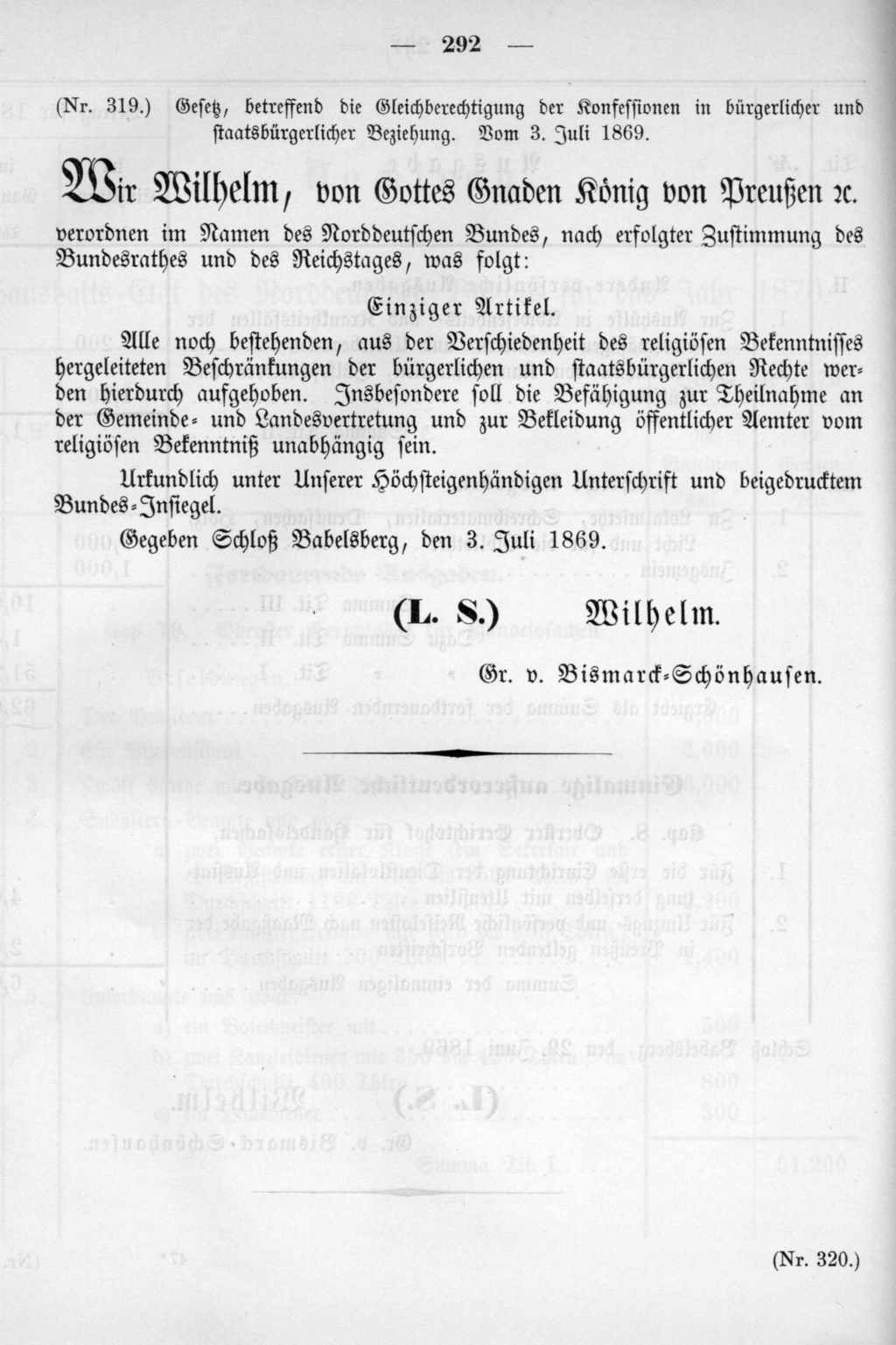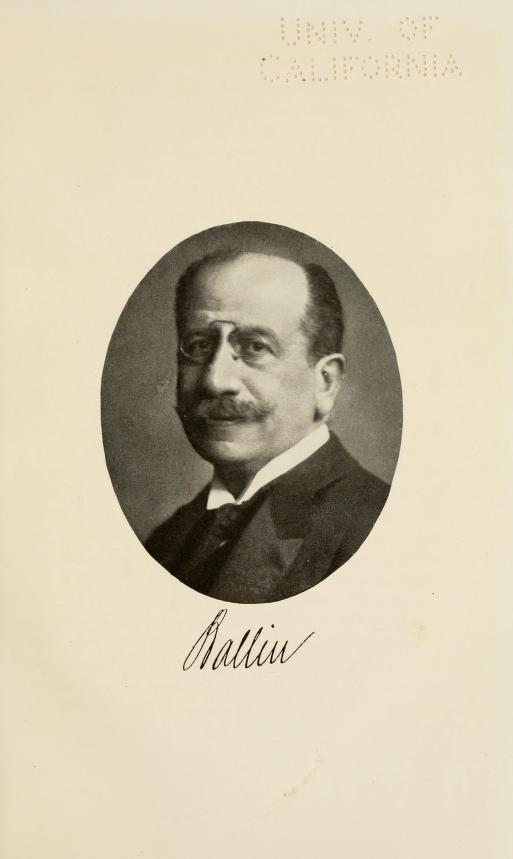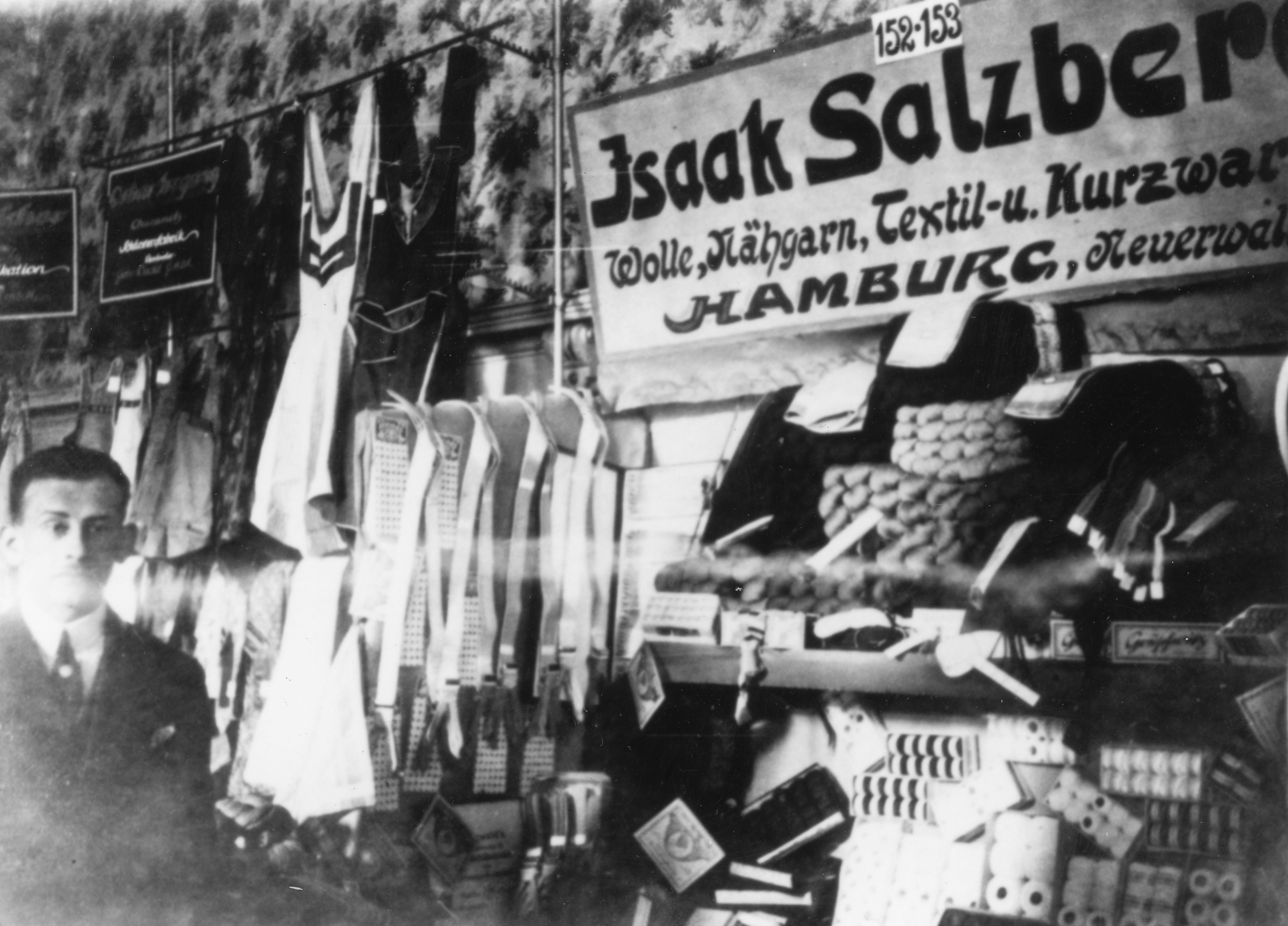Early modern occupational patterns
Efforts to make the Jews “more productive”
The shift in Jewish occupational patterns towards the middle class
The occupational patterns of Hamburg’s Jews during the Kaiserreich
The National Socialist regime’s policy of economic discrimination
New economic beginnings after 1945
Since the early modern period the economic activities of Jews in Hamburg and in Germany in general differed in some ways from those of the general population: due to legal and political limitations Jews were more likely to work in trade and finance than in the crafts or farming. In a commercial metropolis such as Hamburg this meant they played a special role since they first settled there in the 16th and 17th centuries. As a result of the debate on Jewish emancipation the idea of “making the Jews more productive” [Produktivierung] arose in economic policy circles. What this meant was a shift from trade and finance to supposedly more productive occupations in the crafts and agriculture, a plan destined to become anachronistic very soon. In the 19th century Jews advanced socially through the process of becoming assimilated into the bourgeoisie [Verbürgerlichung]. As this process increasingly resulted in higher education levels and more academic qualifications, their occupational patterns changed. A growing number among them pursued a career in the professions such as medicine or law. Jews generally remained barred from entering the civil service for formal and informal reasons until the early 20th century. From the very beginning, the National Socialist regime’s policy of marginalizing the Jews also included attempts to eliminate them from economic life in Hamburg and the rest of Germany. A few years after the end of the war, the Federal Republic’s compensation policy [Wiedergutmachung] was meant to help compensate for the economic damage suffered, but in many respects it could only remain insufficient. Due to their different structure and small size the newly established Jewish communities were unable to return to their pre-war economic significance.
Since the Middle Ages the occupational and economic situation of the Jews in the German-speaking territories had been shaped by the fact that they were not admitted into the guilds and thus remained factually excluded from all crafts organized in guilds. Moneylending and banking on the other hand was an important occupation open to them, especially since religious rules often restricted Christians in this area. Meanwhile Jews were allowed to settle as merchants or traders in the German states because their Christian rulers assumed they had international or at least interstate contacts and trade relations. This in turn strengthened their position in trade. This basic structure also applied to the settlement of Jews in Hamburg since the late 16th century. Accordingly, it was Sephardic merchants engaging in cross-regional trade who first came to the city, a commercial hub. In the course of the century their occupational pattern shifted increasingly towards banking and loans.
In the early 17th century Ashkenazi Jews began settling in Hamburg, also engaging mainly in trade, although mostly in small retail. In Hamburg, too, their economic activities were limited by law. While the Regulation on Jews of 1710 Judenordnung von 1710 had confirmed the exclusion of Jews from the guilds, it allowed them to engage in moneylending with some restrictions against usury. Among Hamburg’s first Ashkenazi Schutzjuden was Glikl von Hameln ’s father, pawnbroker and jewel merchant Juda Joseph, but he was expelled from Hamburg and moved to Altona in 1648. Glikl and her husband Chajim were later able to settle in Hamburg, where she continued to run his gold trading business after his death. Being a woman, her life was hardly representative of Jewish economic activity in the early modern period, but she can be considered an example of the significance of trade for the Jewish minority. As a result of their high representation in trade, finance, and the professions Jews remained visible as a group into the modern age.
Issues of economic policy were regularly discussed as part of the debates on Jewish emancipation in the German territories taking place since the Enlightenment era. One major argument in this debate was the idea that it was necessary to make the Jews “more productive.” It was based on the assumption that the concentration of Jews in supposedly unproductive sectors of the economy such as trade or loans was detrimental to their economic development and that Jews, as part of their emancipation, had to be enabled to take up more productive occupations such as farming or crafts.
Hamburg, too, saw such attempts at increasing the Jews’ productivity: in 1815 liberal forces within the Jewish congregation founded the Israelite Free School Israelitische Freischule, which did not provide an Orthodox religious education as the Talmud Torah School did, but instead aimed at preparing its mostly poor students for taking up a craft or trade. The same goal was pursued by the Association for the Promotion of the Crafts among the Israelites Verein zur Förderung des Handwerks unter den Israeliten, and as of 1906 also by the Association of Self-Employed Jewish Craftsmen and Merchants of Greater Hamburg Verein selbständiger jüdischer Handwerker und Gewerbetreibender in Groß-Hamburg. However, the argument that trade and finance were less productive economic sectors made less sense to people in a commercial metropolis such as Hamburg than it did in largely rural Prussia, for example. Moreover, in 19th century Germany these efforts did not produce the hoped for results everywhere. The economic development at the time did not make a career in the crafts and farming — particular emphasis was put on the latter in the efforts made in the rural German territorial states to “increase Jewish productivity” — seem very promising. By contrast the professions, trade, and banking grew increasingly attractive in the course of the 19th century since they became the dynamic sectors of modern national economies.
Regardless of the efforts to increase Jewish productivity, new professions opened up to the Jews thanks to emancipation so that the occupational profile of the Jewish minority changed long-term. Their continuous social ascent to the newly emerging bourgeois middle class began to take its course. It was only in the years after 1860 that freedom of trade was introduced area-wide, and it was uniformly regulated when the North German Confederation was established in 1866. There were regional differences with regard to occupations, just as there had been limits to vocational choice previously, and the willingness among the Jewish minority to take up new professions also varied from one place to another. This was due in large part to the fact that regulations regarding the licensing for craftsmen or the right to acquire land and real estate varied from one state to another. In Hamburg restrictions imposed on Jews regarding residence, property, and occupation [Wohn-, Eigentums- und Erwerbsbeschränkung] were lifted in December 1842. There was an ulterior motive to this decision: after the devastating fire of 1842 had destroyed large parts of Hamburg, the city hoped the Jews would acquire fire damaged property and thus contribute to the city’s rebuilding. The city in turn would profit from it.
At the beginning of the 19th century the large majority of German Jews were poor. Half of them worked as retail clerks, domestic servants, and day laborers, thus belonging to the lower class. While about half of all German Jews were considered poor around 1850, this applied to only 25 percent of them by 1871. Within the space of a century Jews had become a majority middle class and urban population group. Since the time of the Kaiserreich, roughly two thirds of the Jewish population belonged to the middle class in terms of their occupational patterns, income, and habits.
The assimilation of the German Jews into the middle class is most evident in the area of the professions: in 1862 two thirds of the Jewish workforce in Prussia were self-employed; in 1925 it was about half of it while the share of the self-employed among the general population was only about 17 percent. The share of Jews was not the same in all areas of the professions: during the Kaiserreich it was just over 2 percent in the arts, around 6 percent among physicians, and as high as 14 percent among lawyers. This was due in part to the high value Jews placed on academic education. Since Jews were not admitted into the civil service until well into the 20th century, the professions were the main option for social advancement. Consequently there were few judges, public prosecutors, and professors of Jewish origin, but many lawyers, journalists, and physicians. In the late 19th century 15 percent of lawyers nationwide were Jewish; by 1925 their share had even risen to a quarter of all lawyers.

Federal Law Gazette of the Northern-German Federation, 1869, on emancipation of Jews, copy-print 1891.
Source: Wikimedia Commons, public domain.
After a law stipulating equal treatment [Gleichstellungsgesetz] was passed in 1869, religious reservations against Jews in the civil service no longer had a legal basis, which allowed for the appointment of the first four Jews as district court judges in 1870. There had been earlier exceptions: Gabriel Riesser, who also made a name for himself as a politician, had been appointed Obergerichtsrat in Hamburg in 1859. Overall, entry into the civil service remained difficult, however. The legal obstacles continuing to keep Jews out of leading positions in the justice system were only removed after the First World War. Lack of access to professional networks and informal discrimination still represented obstacles to an academic career for them, and even in the Weimar Republic Jews were rarely appointed to university professorships.
In late 19th century Hamburg the occupational patterns of the Jews followed the trend of overall assimilation into the middle class, but they did differ markedly from those of the overall population. 55 percent were active in trade, especially in the mercantile and agricultural products trade while 17 percent worked in manufacturing, particularly in garment manufacturing. 7.5 percent of Hamburg’s Jews worked in professions such as law, medicine, and journalism. By comparison, one third of Hamburg’s overall population worked in trade – a much smaller share than among the Jewish population – and another third worked in manufacturing – a larger share than among Jews. Thus it is not surprising that Hamburg’s – and many German – Jews showed a tendency towards self-employment; for a long time it remained unusual for them to work as salaried employees. It is important to note that the social spectrum represented in these professions was very broad. In addition to many members of the middle class and lower middle class there were a few upper middle class and wealthy Hamburg Jews such as banker Salomon Heine or shipping company owner Albert Ballin. The economic composition of Hamburg’s Jews had indeed become modernized while remaining particular in comparison to the city’s overall population.

Portrait of Albert
Ballin, date unknown.
Source: archive.org, published in: Frederic
William Wile, Men around the Kaiser. The makers of modern Germany,
London 1913, p. 33.
In the 19th and 20th centuries the percentage of working Jewish women was lower than that among non-Jewish women, which certainly was due to the fact that they were more likely to belong to the middle class: according to a 1907 statistic, only 18 percent of them worked in comparison to 30 percent of the general female population. The disparity between Jewish and non-Jewish women was particularly obvious in the area of agriculture: only 3.5 percent of Jewish women worked in this sector compared to 43 percent of women overall. In the Weimar Republic Jewish women increasingly joined the workforce as a result of progressing modernization as well as the economic crisis. In 1925 a third of all Jewish women in Prussia between the ages of 15 and 65 were employed—however, this number was still well below the average among the general population, where the share of female employment was almost 50 percent.
The National Socialist regime intended from the very beginning to banish Jews from economic life. The call for an anti-Jewish boycott issued by the SA on April 1st, 1933 targeted many Jewish businesses, but also physicians and lawyers. Of the roughly 100,000 companies and businesses that were Jewish-owned in 1933, 25,000 had to be closed in the first two years after the National Socialists came to power. The Law for the Restoration of the Professional Civil Service Gesetz zur Wiederherstellung des Berufsbeamtentums of April 7, 1933 which required proof of “Aryan origin” [Ariernachweis] in order to maintain one’s position in the civil service resulted in the dismissal of Jewish civil servants and judges; similar decrees later targeted Jewish lawyers, notaries public, physicians, and accountants. Other professional associations soon introduced such rules of their own accord, and large companies dismissed their Jewish employees. The process of “Aryanization,” which began in 1933 and intensified as of 1937, forced Jewish business owners to sell their companies or sign them over to a non-Jewish employee or the competition. The Decree on the Elimination of the Jews from Economic Life Verordnung zur Ausschaltung der Juden aus dem deutschen Wirtschaftsleben of November 1938 further intensified “Aryanization” by targeting Jewish-owned real estate and private assets for National Socialist persecution. In Hamburg the process of “Aryanization” unfolded somewhat more slowly than in other parts of Germany, which was due in part to the anonymity of a major city which made boycott campaigns against Jews less effective. Another reason was that the local NSDAP leadership initially exercised restraint because they did not want to further exacerbate the city’s difficult economic circumstances. Nevertheless, by 1939 about 1,500 Jewish-owned companies had been dissolved or sold to “Aryans,” usually far below their actual value.

Dry goods store of Isaak Salzberg in
Neuer
Wall, Hamburg, 1936.
Source: Picture Database of the Institute for the History of the
German Jews, Collection Ursula Randt, originally
private collection of Jutta Levy
(USA).
The Jews reacted to their economic exclusion in various ways. They had been used to economic difficulty for some time because they had suffered since the Great Depression in 1929. Jewish congregations quickly began taking emergency measures in order to support their members. They increased their services for vocational counseling and placement and also offered support for training in a new profession. In light of the radical reduction in jobs available to Jews after 1933 such measure had to be expanded. This led to the emergence of a parallel economy run by Jews for Jews. The Hakhshara, a professional training system existing since the 1920s that was designed to prepare mainly young Jews for settling in Palestine and usually included training in farming, crafts, etc. came to play a central role in this effort. Several Hakhshara centers were established in Hamburg, in the districts of Rissen and Blankenese, for example. Overall this economic marginalization deprived many Jews of their livelihood and therefore drove them to emigrate if possible, which was precisely what the National Socialists intended.
The occupational patterns of the Jewish community forming after the end of the Second World War, which basically consisted of eastern European migrants and Displaced Persons (DPs), clearly differed from prewar patterns. However, in some regions Western Allied policies in the immediate postwar period resulted in the development of a particular economic profile, at least among the first postwar generation of the Jewish community: licenses for restaurants and bars were readily available to Jews who had remained in Germany, many among them from Poland, and some were able to establish themselves in the real estate business. In retail, Jewish businesspeople again concentrated in the textile industry in the 1950s and 60s. Another significantly large number among Jews who had remained in Germany and especially among those who had returned to Germany were lawyers: apart from their German language, familiarity with only the German justice system had made it difficult for them to build a career in exile. When they returned to Germany after the war, however, these two factors naturally proved advantageous.
The West German economic policy of Wiedergutmachung, which among other things included the restitution of or compensation for confiscated and lost property to formerly German Jews, was particularly controversial among the non-Jewish population. Hamburg became a pioneer in this regard when its city assembly in 1948 made it possible to pay pensions to those recognized as victims of National Socialist persecution. In 1949 a “Haftentschädigungsgesetz” compensating those imprisoned by the National Socialists was passed, followed by an General Law on Compensation Allgemeines Widergutmachungsgesetz in 1953, which remained in effect until a federal law on compensation Bundesentschädigungsgesetz was passed in 1956. While the compensation policy [Wiedergutmachung] initially was a controversial issue for many victims of the Holocaust as well as the Federal Republic’s general population, it did represent a significant step towards acknowledging the injustice suffered by the victims and at least making an attempt at compensation.
This text is licensed under a Creative Commons Attribution - Non commercial - No Derivatives 4.0 International License. As long as the work is unedited and you give appropriate credit according to the Recommended Citation, you may reuse and redistribute the material in any medium or format for non-commercial purposes.
Uffa Jensen (Thematic Focus: Law and Politics / Economy and Occupational Patterns), Prof. Dr. phil., holds a Heisenberg professorship by the German Research Foundation (DFG) at the Center for Research on Antisemitism since 2018, where he is also acting as Deputy Director. Among his research interests are the history of knowledge and science, transnational history, history of psychoanalysis, modern Jewish history and the history of antisemitism.
Uffa Jensen, Economy and Occupational Composition (translated by Insa Kummer), in: Key Documents of German-Jewish History, 22.09.2016. <https://dx.doi.org/10.23691/jgo:article-223.en.v1> [December 19, 2025].